Impacts of AIOT Implementation Course on the Learning Outcomes of Senior High School Students
Abstract
1. Introduction
1.1. Research Background and Motives
1.2. Research Questions
- What is the impact of “individual difference factors” on the technology acceptance model of senior high school AI deep learning?
- What is the relationship between “learning engagement” and the technology acceptance model of senior high school AI deep learning?
- What is the impact of the “technology acceptance model” on the learning outcomes and course satisfaction of senior high school AI deep learning?
- How to construct a teaching module suitable for senior high school students to learn AI deep learning courses?
1.3. Research Purposes
- To explore the impact of “individual difference factors” on the technology acceptance model of senior high school AI deep learning.
- To explore the relationship between “learning engagement” and the technology acceptance model of senior high school AI deep learning.
- To explore the impact of the “technology acceptance model” on the learning outcomes and course satisfaction of senior high school AI deep learning.
- To construct a teaching module suitable for implementing AIOT courses in senior high school.
2. Literature Review
2.1. Application of the 4D Double Diamond Model (Discover, Define, Develop, Deliver) in Education
- Exploration of the problem in stage 1: to understand the real world behavior and the problems faced.
- Definition of the problem in stage 2: after understanding the actual usage environment and the problems encountered, record and prioritize the problem to “determine the problem to be solved”.
- Development of possible solutions in stage 3: to evaluate solutions to determine the best implementation.
- Selection and development of the solution in stage 4: to finalize the solution.
2.2. Impact and Application of AI in Education
2.3. Application of Python in Education
2.4. Application of Deep Learning in Education
2.5. Technology Acceptance Model
- H1: External factor self-efficacy has a positive and significant impact on perceived ease of use.
- H2: External factor learning anxiety has a positive and significant impact on perceived ease of use.
- H3: External factor self-efficacy has a positive and significant impact on perceived usefulness.
- H4: External factor learning anxiety has a positive and significant impact on perceived usefulness.
- H5: Perceived ease of use has a positive and significant impact on perceived usefulness.
- H6: Perceived ease of use has a positive and significant impact on learning engagement.
- H7: Perceived usefulness has a positive and significant impact on learning engagement.
- H8: Learning engagement has a positive and significant impact on behavioral intention.
- H9: Behavioral intention has a positive and significant impact on learning outcomes.
- H10: Behavioral intention has a positive and significant impact on learning satisfaction.
3. Research Method and Design
3.1. Questionnaire Dimensions
3.1.1. Self-Efficacy
3.1.2. Learning Anxiety
3.1.3. Learning Engagement
3.1.4. Learning Outcomes
3.1.5. Learning Satisfaction
3.2. Course Content and Teaching Design
3.2.1. Course Design
- Stage 1. Exploration: Current situation analysis
- 2.
- Stage 2. Definition: Define the course
- 3.
- Stage 3. Development: Course implementation
- 4.
- Stage 4. Realization: Achievement display
3.2.2. Teaching Practice
- Stage 1. Exploration: Arouse Interest
- 2.
- Stage 2. Definition: Teaching Activities
- 3.
- Stage 3. Development: Focus on Learning
- 4.
- Stage 4. Realization: Achievement Display
3.2.3. Research Model Hypothesis
3.2.4. Operation-Type Definitions and Measurement Method
3.2.5. Research Subjects
3.2.6. Research Tools
4. Research Results
4.1. Sample Background Analysis
4.2. Research Method
4.3. Data Analysis
4.3.1. Verification of Common Method Variation
4.3.2. Measurement Model Analysis
- Collinearity Evaluation Analysis
- 2.
- Reliability Analysis:
- General reliability indicator: in order to verify the reliability of each item, reliability analysis (Cronbach’s α) was performed on each dimension although the Cronbach’s α value. The α values of the remaining dimensions ranged from 0.750 to 0.883, meaning all of them were above the minimum values of all thresholds, and thus, within the reliability range recommended by Nunnally, as shown in Table 3.
- Composite reliability: in order to verify the consistency of the observed variables of each dimension, composite reliability testing was carried out, and the results show that the CR values of each dimension ranged from 0.845 to 0.911, which are all higher than the threshold value of 0.7 [96], as shown in Table 3.
- Indicator reliability: considering factor loadings with the threshold value of 0.7 [95] as the basis for deleting items, the items of la_3, la_6, bi_4, ls_4, lo_4, le_5, and pu_3 were deleted in order, and the factor loadings of the other items were all between 0.707 and 0.930. In summary, it is shown that this questionnaire has good reliability, as shown in Table 3.
- 3.
- Construction Validity Analysis
- Convergent validity: the purpose of convergent validity is to determine the consistency of each dimension, and the average variance extracted (AVE) value of each dimension was between 0.632 and 0.820. As shown in Table 3, the average explanatory power of each dimension to the indicator is more than 50%, with good convergent validity.
- Discriminant validity: before structural model analysis, one of the prerequisites is to test discriminant validity among different dimensions, and the most commonly used items to test discriminant validity are cross-loading and the Formell–Larcker criterion. It can be seen from Table 4 that the factor loadings of each dimension are all greater than the cross-loading between the dimension and other dimensions. Secondly, according to the Formell–Larcker criterion, if the AVE square root of each dimension is greater than the correlation coefficient between the dimension and other dimensions, then discriminant validity can be achieved. The results show that the AVE square roots of each dimension are between 0.795 and 0.900, which are greater than the correlation coefficient between the dimension and other dimensions. As shown in Table 5, each dimension has good convergent validity, thus, it can be concluded that all the dimensions in this study have good construction validity.
4.3.3. Structural Model Analysis
- Verification of path relationship
- Impact of self-efficacy on learning outcomes and learning satisfaction in implementing the flipped teaching of the AIOT course, as based on the technology acceptance model
As a computer user, I can concentrate more on computer videos than books.(20200107)
I can make good use of my free time and let the videos match my timetable. Unlike before, I can keep learning through online videos, not limited by time and space, and I can also watch them over and over again, and review ideas when I don’t understand them.(20200124)
I was able to use online videos to understand what I didn’t understand in class or to study further.(20200136)
I prefer online learning to traditional teaching, because the traditional teaching method is not easy to understand and boring. In addition to being easier to understand, online learning is less boring than traditional teaching.(20200309)
I prefer online learning to traditional teaching, because modern online learning is more convenient and interesting, and the traditional teaching method seems a little old-fashioned. I hope I can use online learning more.(20200301)
In traditional teaching, we cooperate with teachers to learn. But online teaching allows teachers to work with us, and when we don’t understand something, we use online teaching videos to remove the confusion again and again, making learning easier.(20200324)
- Impact of learning anxiety on learning outcomes and learning satisfaction in implementing flipped teaching of the AIOT course, as based on the technology acceptance model
It helps more or less. If you don’t understand the online videos, you can go back to watching them again; if you still don’t understand it, you can directly check it online. If you still don’t understand it, you can also ask the teacher or expert in the professional field online.(20200208)
Modern teenagers prefer 3C products. There are many advantages, such as check-in, uploading videos, sharing websites, etc., but the disadvantage is that we can’t know whether we are interacting with real people online.(20200213)
I prefer online learning. Because when you don’t understand a chapter or a segment of audio and video teaching, you can watch it repeatedly, and you are not restricted by the fixed location of the class.(20200230)
- Impact of learning engagement on learning outcomes and learning satisfaction in implementing flipped teaching of the AIOT course, as based on the technology acceptance model
It is no longer a rigid course, but a practical operation and practice, so that students can better understand the principles of AI and become interested in it at the same time.(20200411)
It allows us to personally experience the convenience of AI and helps us learn about it.(20200430)
For modern AI engineers and programmers, the actual operation and application can inspire more inspiration. As the saying goes, practice makes perfect. Only by continuous operation, repeated observation, and discussion, can we apply this knowledge to masterpieces.(20200413)
- 2.
- Evaluation of Model Explanatory Power
- 3.
- Evaluation of overall model fitness
5. Conclusions and Suggestions
5.1. Conclusions
5.1.1. The Impacts of Individual Differences on the Technology Acceptance Model
- The impact of self-efficacy on perceived ease of use and usefulness
- 2.
- The impact of learning anxiety on perceived ease of use and usefulness
5.1.2. Relationship between the Technology Acceptance Model and Learning Engagement
- The impacts of various dimensions of the technology acceptance model
- 2.
- The impact of technology acceptance model and learning engagement
- 3.
- The impact of the technology acceptance model on learning outcomes and learning satisfaction
5.2. Research Findings and Suggestions
5.3. Research Limitations
5.4. Practice and Research Implications
Author Contributions
Funding
Informed Consent Statement
Data Availability Statement
Conflicts of Interest
References
- Ebner, M.; Schön, S.; Khalil, M. Maker-MOOC—How to Foster STEM Education with an Open Online Course on Creative Digital Development and Construction with Children. In Proceedings of the 19th International Conference on Interactive Collaborative Learning (ICL2016), Belfast, UK, 21–23 September 2016; Springer: Cham, Switzerland, 2017. [Google Scholar]
- Honey, M.; Kanter, D. Design, Make, Play: Growing the Next Generation of STEM Innovators; Routledge: Abingdon, UK, 2013; pp. 7–11. [Google Scholar]
- Perignat, E.; Katz-Buonincontro, J. STEAM in practice and research: An integrative literature review. Think. Ski. Creat. 2019, 31, 31–43. [Google Scholar] [CrossRef]
- Kahn, K. A half-century perspective on Computational Thinking. Tecnol. Soc. Conhecimento 2017, 4, 23–42. [Google Scholar]
- Tsai, C.-C.; Cheng, T.-F.; Shih, R.-C.; Lou, S.-J. The Construction of Artificial Intelligence Deep Learning Ability Indicators for Vocational High School Students. In Proceedings of the Int’l Conference on Economics, Education, Humanities & Social Sciences Studies, Milan, Italy, 5–7 August 2019; Available online: https://www.researchgate.net/profile/Asaad-K-Abdullah/publication/339662735_Milan_Italy_Editors/links/5e5eacf24585152ce804d74f/Milan-Italy-Editors.pdf#page=51 (accessed on 7 August 2019).
- Kaplan, A.M.; Haenlein, M. Higher education and the digital revolution: About MOOCs, SPOCs, social media, and the Cookie Monster. Bus. Horiz. 2016, 59, 441–450. [Google Scholar] [CrossRef]
- Lin, Q.; Yin, Y.; Tang, X.; Hadad, R.; Zhai, X. Assessing learning in technology-rich maker activities: A systematic review of empirical research. Comput. Educ. 2020, 157, 103944. [Google Scholar] [CrossRef]
- Xu, J.; Chao, C.-J.; Fu, Z. Research on Intelligent Design Tools to Stimulate Creative Thinking; Springer: Cham, Switzerland, 2020. [Google Scholar]
- D’Ettole, G.; Bjørner, T.; De Götzen, A. How to Design Potential Solutions for a Cross-Country Platform That Leverages Students’ Diversity: A User-Centered Design Approach—and Its Challenges; Springer: Cham, Switzerland, 2020. [Google Scholar]
- Czerkawski, B.C.; Lyman, E.W. Exploring Issues about Computational Thinking in Higher Education. TechTrends 2015, 59, 57–65. [Google Scholar] [CrossRef]
- Aoun, J.E. Robot-Proof: Higher Education in the Age of Artificial Intelligence; MIT Press: Cambridge, MA, USA, 2017. [Google Scholar]
- Papadopoulos, I.; Lazzarino, R.; Miah, S.; Weaver, T.; Thomas, B.; Koulouglioti, C. A systematic review of the literature regarding socially assistive robots in pre-tertiary education. Comput. Educ. 2020, 155, 103924. [Google Scholar] [CrossRef]
- Chan, K.S.; Zary, N. Applications and Challenges of Implementing Artificial Intelligence in Medical Education: Integrative Review. JMIR Med. Educ. 2019, 5, e13930. [Google Scholar] [CrossRef] [PubMed]
- Khumrina, P.; Ryanb, A.; Juddb, T.; Verspoora, K. Diagnostic machine learning models for acute abdominal pain: Towards an e-learning tool for medical students. In MEDINFO 2017: Precision Healthcare through Informatics, Proceedings of the 16th World Congress on Medical and Health Informatics, Hangzhou, China, 21–25 August 2017; IOS Press: Amsterdam, The Netherlands, 2018. [Google Scholar]
- Petrovskaya, A.; Pavlenko, D.; Feofanov, K.; Klimov, V. Computerization of learning management process as a means of improving the quality of the educational process and student motivation. Procedia Comput. Sci. 2020, 169, 656–661. [Google Scholar] [CrossRef]
- Hwang, G.-J.; Xie, H.; Wah, B.W.; Gašević, D. Vision, challenges, roles and research issues of Artificial Intelligence in Education. Comput. Educ. Artif. Intell. 2020, 1, 100001. [Google Scholar] [CrossRef]
- Fraanje, R.; Koreneef, T.; Mair, A.L.; de Jong, S. Python in robotics and mechatronics education. In Proceedings of the 2016 11th France-Japan & 9th Europe-Asia Congress on Mechatronics (MECATRONICS)/17th International Conference on Research and Education in Mechatronics (REM), Compiegne, France, 15–17 June 2016. [Google Scholar]
- Solanki, V.K.; Díaz, V.G.; Davim, J.P. Handbook of IoT and Big Data; CRC Press: Boca Raton, FL, USA, 2019. [Google Scholar]
- Chu, Q.; Yu, X.; Jiang, Y.; Wang, H. Data Analysis of Blended Learning in Python Programming. In Algorithms and Architectures for Parallel Processing, Proceedings of the 18th International Conference, ICA3PP 2018, Guangzhou, China, 15–17 November 2018; Springer International Publishing: Cham, Switzerland, 2018. [Google Scholar]
- Guanghui, Z.; Yanjun, L.; Yixiao, T.; Zhaoxia, W.; Chengming, Z. Case-Based Teaching Organization for Python Programming that Focuses on Skill Training. In Proceedings of the 2018 13th International Conference on Computer Science & Education (ICCSE), Colombo, Sri Lanka, 8–11 August 2018. [Google Scholar]
- Kui, X.; Liu, W.; Xia, J.; Du, H. Research on the improvement of python language programming course teaching methods based on visualization. In Proceedings of the 2017 12th International Conference on Computer Science and Education (ICCSE), Piscataway, NJ, USA, 22–25 August 2017. [Google Scholar]
- Mitchell, R. Web Scraping with Python: Collecting More Data from the Modern Web; O’Reilly Media: Sebastopol, CA, USA, 2018. [Google Scholar]
- Sergey, B. Python Programming Language as a Tool for Integrated Learning of Robotics in Secondary School. Int. J. Smart Educ. Urban Soc. 2018, 9, 76–86. [Google Scholar] [CrossRef]
- Chen, X.; Xie, H.; Zou, D.; Hwang, G.-J. Application and theory gaps during the rise of Artificial Intelligence in Education. Comput. Educ. Artif. Intell. 2020, 1, 100002. [Google Scholar] [CrossRef]
- Feuerriegel, S.; Fehrer, R. Improving Decision Analytics with Deep Learning: The Case of Financial Disclosures. In Proceedings of the ECIS, Istanbul, Turkey, 12–15 June 2016. [Google Scholar]
- Akanbi, L.A.; Oyedele, A.O.; Oyedele, L.O.; Salami, R.O. Deep learning model for Demolition Waste Prediction in a circular economy. J. Clean. Prod. 2020, 274, 122843. [Google Scholar] [CrossRef]
- Wan, J.; Wang, D.; Hoi, S.C.H.; Wu, P.; Zhu, J.; Zhang, Y.; Li, J. Deep Learning for Content-Based Image Retrieval: A Comprehensive Study. In Proceedings of the 22nd ACM international conference on Multimedia, Orlando, FL, USA, 3–7 November 2014. [Google Scholar] [CrossRef]
- Mayr, A.; Klambauer, G.; Unterthiner, T.; Hochreiter, S. DeepTox: Toxicity Prediction using Deep Learning. Front. Environ. Sci. 2016, 3. [Google Scholar] [CrossRef]
- Pang, S.; del Coz, J.J.; Yu, Z.; Luaces, O.; Díez, J. Deep learning to frame objects for visual target tracking. Eng. Appl. Artif. Intell. 2017, 65, 406–420. [Google Scholar] [CrossRef]
- Fayek, H.M.; Lech, M.; Cavedon, L. Evaluating deep learning architectures for Speech Emotion Recognition. Neural Netw. 2017, 92, 60–68. [Google Scholar] [CrossRef] [PubMed]
- Zhao, Z.; Chen, W.; Wu, X.; Chen, P.C.Y.; Liu, J. LSTM network: A deep learning approach for short-term traffic forecast. IET Intell. Transp. Syst. 2017, 11, 68–75. [Google Scholar] [CrossRef]
- Fan, C.; Xiao, F.; Zhao, Y. A short-term building cooling load prediction method using deep learning algorithms. Appl. Energy 2017, 195, 222–233. [Google Scholar] [CrossRef]
- Luo, C.; Wu, D.; Wu, D. A deep learning approach for credit scoring using credit default swaps. Eng. Appl. Artif. Intell. 2017, 65, 465–470. [Google Scholar] [CrossRef]
- Ma, J.; Sheridan, R.P.; Liaw, A.; Dahl, G.E.; Svetnik, V. Deep Neural Nets as a Method for Quantitative Structure–Activity Relationships. J. Chem. Inf. Model. 2015, 55, 263–274. [Google Scholar] [CrossRef]
- Wei, S.; Tien, P.W.; Calautit, J.K.; Wu, Y.; Boukhanouf, R. Vision-based detection and prediction of equipment heat gains in commercial office buildings using a deep learning method. Appl. Energy 2020, 277, 115506. [Google Scholar] [CrossRef]
- Costa-jussà, M.R.; Allauzen, A.; Barrault, L.; Cho, K.; Schwenk, H. Introduction to the special issue on deep learning approaches for machine translation. Comput. Speech Lang. 2017, 46, 367–373. [Google Scholar] [CrossRef]
- Sufian, A.; Ghosh, A.; Sadiq, A.S.; Smarandache, F. A Survey on Deep Transfer Learning to Edge Computing for Mitigating the COVID-19 Pandemic. J. Syst. Archit. 2020, 108, 101830. [Google Scholar] [CrossRef]
- Waheed, H.; Hassan, S.-U.; Aljohani, N.R.; Hardman, J.; Alelyani, S.; Nawaz, R. Predicting academic performance of students from VLE big data using deep learning models. Comput. Hum. Behav. 2020, 104, 106189. [Google Scholar] [CrossRef]
- Šumak, B.; Heričko, M.; Pušnik, M. A meta-analysis of e-learning technology acceptance: The role of user types and e-learning technology types. Comput. Hum. Behav. 2011, 27, 2067–2077. [Google Scholar] [CrossRef]
- Al-Fraihat, D.; Joy, M.; Masa’deh, R.E.; Sinclair, J. Evaluating E-learning systems success: An empirical study. Comput. Hum. Behav. 2020, 102, 67–86. [Google Scholar] [CrossRef]
- Al-Gahtani, S.S. Empirical investigation of e-learning acceptance and assimilation: A structural equation model. Appl. Comput. Inform. 2016, 12, 27–50. [Google Scholar] [CrossRef]
- Calisir, F.; Altin Gumussoy, C.; Bayraktaroglu, A.E.; Karaali, D. Predicting the Intention to Use a Web-Based Learning System: Perceived Content Quality, Anxiety, Perceived System Quality, Image, and the Technology Acceptance Model. Hum. Factors Ergon. Manuf. Serv. Ind. 2014, 24, 515–531. [Google Scholar] [CrossRef]
- Hsia, J.-W.; Chang, C.-C.; Tseng, A.-H. Effects of individuals’ locus of control and computer self-efficacy on their e-learning accompaniesceptance in high-tech. Behav. Inf. Technol. 2014, 33, 51–64. [Google Scholar] [CrossRef]
- Tarhini, A.; Hone, K.; Liu, X. Measuring the Moderating Effect of Gender and Age on E-Learning Acceptance in England: A Structural Equation Modeling Approach for An Extended Technology Acceptance Model. J. Educ. Comput. Res. 2014, 51, 163–184. [Google Scholar] [CrossRef]
- Tsai, C.C.; Lo, L.; Cheng, Y.M.; Lou, S.J. Optimization on Unified Theory of Acceptance and Use of Technology for Driverless Car Test Behavior. In Proceedings of the 2019 IEEE International Conference on Consumer Electronics—Taiwan (ICCE-TW), Yilan, Taiwan, 20–22 May 2019. [Google Scholar]
- Shen, C.; Chuang, H. Exploring users’ attitudes and intentions toward the interactive whiteboard technology environment. Int. Rev. Comput. Softw. 2010, 5, 200–208. [Google Scholar]
- Abdullah, F.; Ward, R. Developing a General Extended Technology Acceptance Model for E-Learning (GETAMEL) by analysing commonly used external factors. Comput. Hum. Behav. 2016, 56, 238–256. [Google Scholar] [CrossRef]
- Bandura, A. Self-efficacy: Toward a unifying theory of behavioral change. Adv. Behav. Res. Ther. 1978, 1, 139–161. [Google Scholar] [CrossRef]
- Wilson, K.; Narayan, A. Relationships among individual task self-efficacy, self-regulated learning strategy use and academic performance in a computer-supported collaborative learning environment. Educ. Psychol. 2016, 36, 236–253. [Google Scholar] [CrossRef]
- Aesaert, K.; Voogt, J.; Kuiper, E.; van Braak, J. Accuracy and bias of ICT self-efficacy: An empirical study into students’ over- and underestimation of their ICT competences. Comput. Hum. Behav. 2017, 75, 92–102. [Google Scholar] [CrossRef]
- Chuang, S.-C.; Lin, F.-M.; Tsai, C.-C. An exploration of the relationship between Internet self-efficacy and sources of Internet self-efficacy among Taiwanese university students. Comput. Hum. Behav. 2015, 48, 147–155. [Google Scholar] [CrossRef]
- Tsai, C.-C.; Chuang, S.-C.; Liang, J.-C.; Tsai, M.-J. Self-efficacy in Internet-based learning environments: A literature review. J. Educ. Technol. Soc. 2011, 14, 222–240. [Google Scholar]
- Chen, H.-R.; Tseng, H.-F. Factors that influence acceptance of web-based e-learning systems for the in-service education of junior high school teachers in Taiwan. Eval. Program Plan. 2012, 35, 398–406. [Google Scholar] [CrossRef] [PubMed]
- Abdullah, F.; Ward, R.; Ahmed, E. Investigating the influence of the most commonly used external variables of TAM on students’ Perceived Ease of Use (PEOU) and Perceived Usefulness (PU) of e-portfolios. Comput. Hum. Behav. 2016, 63, 75–90. [Google Scholar] [CrossRef]
- Al-alak, B.A.; Alnawas, I.A. Measuring the acceptance and adoption of e-learning by academic staff. Knowl. Manag. E Learn. Int. J. 2011, 3, 201–221. [Google Scholar]
- Ali, H.; Ahmed, A.A.; Tariq, T.G.; Safdar, H. Second Life (SL) in Education: The intensions to use at university of bahrain. In Proceedings of the 2013 Fourth International Conference on E-Learning “Best Practices in Management, Design and Development of E-Courses: Standards of Excellence and Creativity”, Manama, Bahrain, 7–9 May 2013. [Google Scholar]
- Igbaria, M.; Parasuraman, S. A Path Analytic Study of Individual Characteristics, Computer Anxiety and Attitudes toward Microcomputers. J. Manag. 1989, 15, 373–388. [Google Scholar] [CrossRef]
- Alenezi, A.R.; Karim, A.M.A.; Veloo, A. An Empirical Investigation into the Role of Enjoyment, Computer Anxiety, Computer Self-Efficacy and Internet Experience in Influencing the Students’ Intention to Use E-Learning: A Case Study from Saudi Arabian Governmental Universities. Turk. Online J. Educ. Technol. TOJET 2010, 9, 22–34. [Google Scholar]
- Rezaei, M.; Mohammadi, H.M.; Asadi, A.; Kalantary, K.J.O.S. Predicting e-learning application in agricultural higher education using technology acceptance model. Online Submiss. 2008, 9, 85–95. [Google Scholar]
- Tsai, Y.-L.; Tsai, C.-C. Digital game-based second-language vocabulary learning and conditions of research designs: A meta-analysis study. Comput. Educ. 2018, 125, 345–357. [Google Scholar] [CrossRef]
- Yang, Q.-F.; Chang, S.-C.; Hwang, G.-J.; Zou, D. Balancing cognitive complexity and gaming level: Effects of a cognitive complexity-based competition game on EFL students’ English vocabulary learning performance, anxiety and behaviors. Comput. Educ. 2020, 148, 103808. [Google Scholar] [CrossRef]
- Zou, D.; Huang, Y.; Xie, H. Digital game-based vocabulary learning: Where are we and where are we going? Comput. Assist. Lang. Learn. 2019, 1–27. [Google Scholar] [CrossRef]
- Coates, H. Student engagement in campus-based and online education: University connections. In Student Engagement in Campus—Based and Online Education: University Connections; Routledge: Abingdon, UK, 2006. [Google Scholar] [CrossRef]
- Hew, K.F. Promoting engagement in online courses: What strategies can we learn from three highly rated MOOCS. Br. J. Educ. Technol. 2014, 47, 320–341. [Google Scholar] [CrossRef]
- Milligan, C.; Littlejohn, A.; Margaryan, A. Patterns of engagement in connectivist MOOCs. J. Online Learn. Teach. 2013, 9, 149–159. [Google Scholar]
- Ramesh, A.; Goldwasser, D.; Huang, B.; Daumé, H., III; Getoor, L. Modeling learner engagement in MOOCs using probabilistic soft logic. In Proceedings of the NIPS Workshop on Data Driven Education, Lake Tahoe, NV, USA, 9 December 2013. [Google Scholar]
- Xiong, Y.; Li, H.; Kornhaber, M.L.; Suen, H.K.; Pursel, B.; Goins, D.D. Examining the relations among student motivation, engagement, and retention in a MOOC: A structural equation modeling approach. Glob. Educ. Rev. 2015, 2, 23–33. [Google Scholar]
- Fredricks, J.A.; Blumenfeld, P.C.; Paris, A.H. School Engagement: Potential of the Concept, State of the Evidence. Rev. Educ. Res. 2004, 74, 59–109. [Google Scholar] [CrossRef]
- Sun, J.C.-Y.; Rueda, R. Situational interest, computer self-efficacy and self-regulation: Their impact on student engagement in distance education. Br. J. Educ. Technol. 2012, 43, 191–204. [Google Scholar] [CrossRef]
- Jung, Y.; Lee, J. Learning Engagement and Persistence in Massive Open Online Courses (MOOCS). Comput. Educ. 2018, 122, 9–22. [Google Scholar] [CrossRef]
- Bond, M. Facilitating student engagement through the flipped learning approach in K-12: A systematic review. Comput. Educ. 2020, 151, 103819. [Google Scholar] [CrossRef]
- Bond, M.; Buntins, K.; Bedenlier, S.; Zawacki-Richter, O.; Kerres, M. Mapping research in student engagement and educational technology in higher education: A systematic evidence map. Int. J. Educ. Technol. High. Educ. 2020, 17, 2. [Google Scholar] [CrossRef]
- Kent, C.; Laslo, E.; Rafaeli, S. Interactivity in online discussions and learning outcomes. Comput. Educ. 2016, 97, 116–128. [Google Scholar] [CrossRef]
- Shavelson, R.J.; Huang, L. Responding Responsibly. Chang. Mag. High. Learn. 2003, 35, 10–19. [Google Scholar] [CrossRef]
- Burr, V. Social Constructionism; Taylor & Francis: Abingdon, UK, 2015. [Google Scholar]
- Garrison, D.R.; Anderson, T.; Archer, W. Critical thinking, cognitive presence, and computer conferencing in distance education. Am. J. Distance Educ. 2001, 15, 7–23. [Google Scholar] [CrossRef]
- van Alten, D.C.D.; Phielix, C.; Janssen, J.; Kester, L. Effects of flipping the classroom on learning outcomes and satisfaction: A meta-analysis. Educ. Res. Rev. 2019, 28, 100281. [Google Scholar] [CrossRef]
- DeLozier, S.J.; Rhodes, M.G. Flipped classrooms: A review of key ideas and recommendations for practice. Educ. Psychol. Rev. 2017, 29, 141–151. [Google Scholar] [CrossRef]
- Lo, C.K.; Hew, K.F.; Chen, G. Toward a set of design principles for mathematics flipped classrooms: A synthesis of research in mathematics education. Educ. Res. Rev. 2017, 22, 50–73. [Google Scholar] [CrossRef]
- Doubleday, A.; Brown, B.; Patston, P.; Jurgens-Toepke, P.; Strotman, M.; Koerber, A.; Haley, C.; Briggs, C.; Knight, G. Social Constructivism and Case-Writing for an Integrated Curriculum. Interdiscip. J. Probl. Based Learn. 2015, 9, 44–57. [Google Scholar] [CrossRef]
- Li, N.; Marsh, V.; Rienties, B.; Whitelock, D. Online learning experiences of new versus continuing learners: A large-scale replication study. Assess. Eval. High. Educ. 2017, 42, 657–672. [Google Scholar] [CrossRef]
- Karatas, S.; Simsek, N. Comparisons of internet-based and face-to-face learning systems based on “equivalency of experiences” according to students’ academic achievements and satisfactions. Q. Rev. Distance Educ. 2009, 10, 65. [Google Scholar]
- Morice, A.; Jablon, E.; Delevaque, C.; Khonsari, R.H.; Picard, A.; Kadlub, N. Virtual versus traditional classroom on facial traumatology learning: Evaluation of medical student’s knowledge acquisition and satisfaction. J. Stomatol. Oral Maxillofac. Surg. 2020. [Google Scholar] [CrossRef]
- Hackman, M.Z.; Walker, K.B. Instructional communication in the televised classroom: The effects of system design and teacher immediacy on student learning and satisfaction. Commun. Educ. 1990, 39, 196–206. [Google Scholar] [CrossRef]
- Yılmaz, R.; Keser, H. The Impact of Interactive Environment and Metacognitive Support on Academic Achievement and Transactional Distance in Online Learning. J. Educ. Comput. Res. 2016, 55, 95–122. [Google Scholar] [CrossRef]
- Spanjers, I.A.E.; Könings, K.D.; Leppink, J.; Verstegen, D.M.L.; de Jong, N.; Czabanowska, K.; van Merriënboer, J.J.G. The promised land of blended learning: Quizzes as a moderator. Educ. Res. Rev. 2015, 15, 59–74. [Google Scholar] [CrossRef]
- Cidral, W.A.; Oliveira, T.; Di Felice, M.; Aparicio, M. E-learning success determinants: Brazilian empirical study. Comput. Educ. 2018, 122, 273–290. [Google Scholar] [CrossRef]
- Aguayo Vergara, M.; Bravo Molina, M.; Nocetti de la Barra, A.; Concha Sarabia, L.; Aburto Godoy, R. Perspectiva estudiantil del modelo pedagógico flipped classroom o aula invertida en el aprendizaje del inglés como lengua extranjera. Rev. Educ. 2019, 43, 97–113. [Google Scholar] [CrossRef]
- Lopes, A.P.; Soares, F. Perception and performance in a flipped Financial Mathematics classroom. Int. J. Manag. Educ. 2018, 16, 105–113. [Google Scholar] [CrossRef]
- Martínez-Jiménez, R.; Ruiz-Jiménez, M.C. Improving students’ satisfaction and learning performance using flipped classroom. Int. J. Manag. Educ. 2020, 18, 100422. [Google Scholar] [CrossRef]
- Sergis, S.; Sampson, D.G.; Pelliccione, L. Investigating the impact of Flipped Classroom on students’ learning experiences: A Self-Determination Theory approach. Comput. Hum. Behav. 2018, 78, 368–378. [Google Scholar] [CrossRef]
- Ringle, C.M.; Wende, S.; Will, A. SmartPLS 2.0 (Beta); University Hamburg: Hamburg, Germany, 2005. [Google Scholar]
- Cohen, J. Statistical Power Analysis for the Behavioral Sciences, 2nd ed.; Hillsdale, N.J., Ed.; Erlbaum: Mahwah, NJ, USA, 1988. [Google Scholar]
- Podsakoff, P.M.; MacKenzie, S.B.; Lee, J.-Y.; Podsakoff, N.P. Common method biases in behavioral research: A critical review of the literature and recommended remedies. J. Appl. Psychol. 2003, 885, 10–1037. [Google Scholar] [CrossRef]
- Hair, J.F.; Black, W.C.; Babin, B.J.; Anderson, R.E.; Tatham, R.L. Multivariate Data Analysis; Prentice Hall: Upper Saddle River, NJ, USA, 1998; Volume 5. [Google Scholar]
- Chin, W.W. The partial least squares approach to structural equation modeling. Mod. Methods Bus. Res. 1998, 295, 295–336. [Google Scholar]
- Bassellier, G.; Benbasat, I. Business competence of information technology professionals: Conceptual development and influence on IT-business partnerships. MIS Q. 2004, 28, 673–694. [Google Scholar] [CrossRef]
- Anuwichanont, J. Examining the relationship between commitment and airline loyalty and the moderating effect of uncertainty avoidance. J. Bus. Econ. Res. 2010, 8. [Google Scholar] [CrossRef]
- Davis, F.D. Perceived Usefulness, Perceived Ease of Use, and User Acceptance of Information Technology. MIS Q. 1989, 13, 319–340. [Google Scholar] [CrossRef]
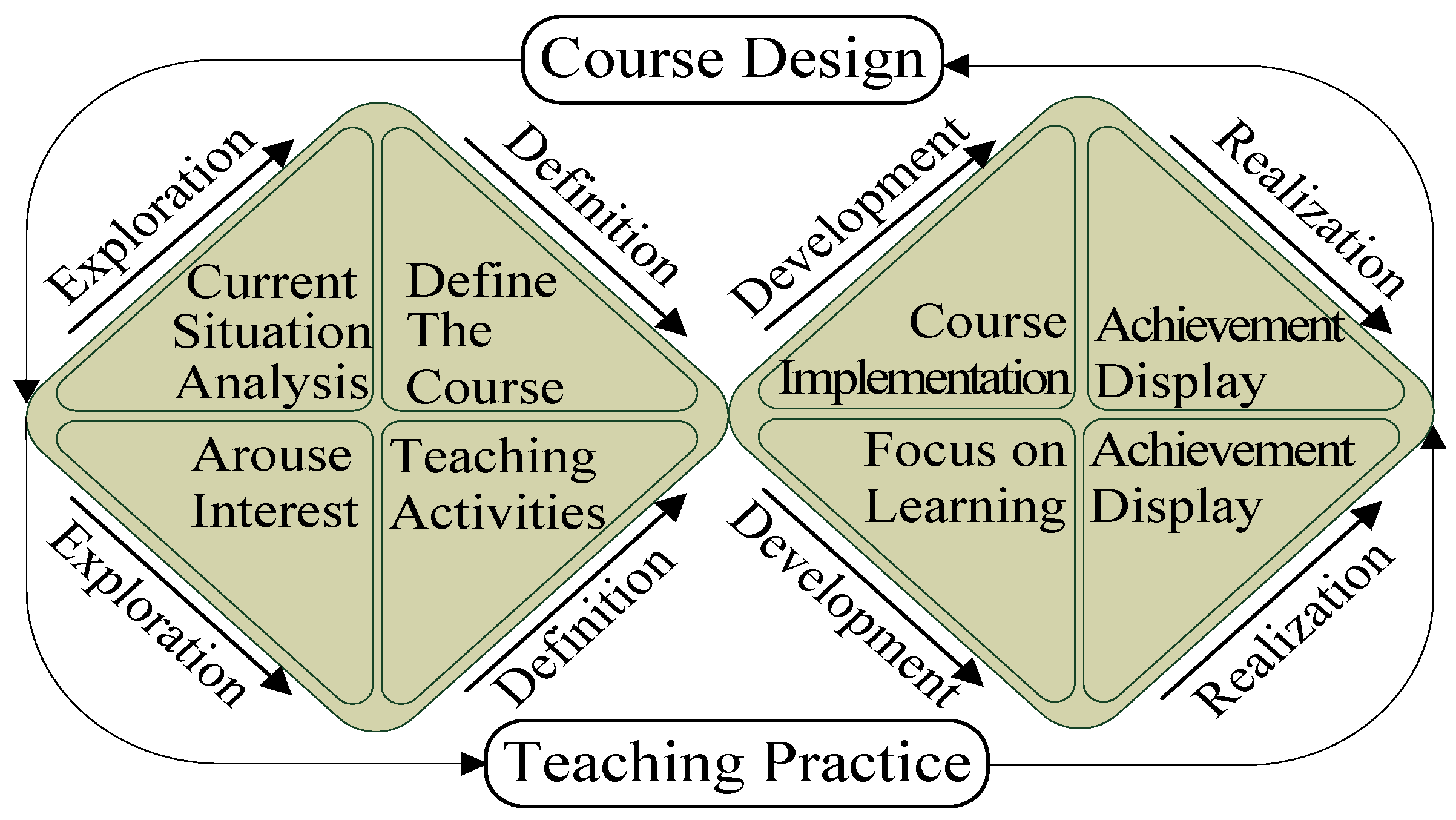
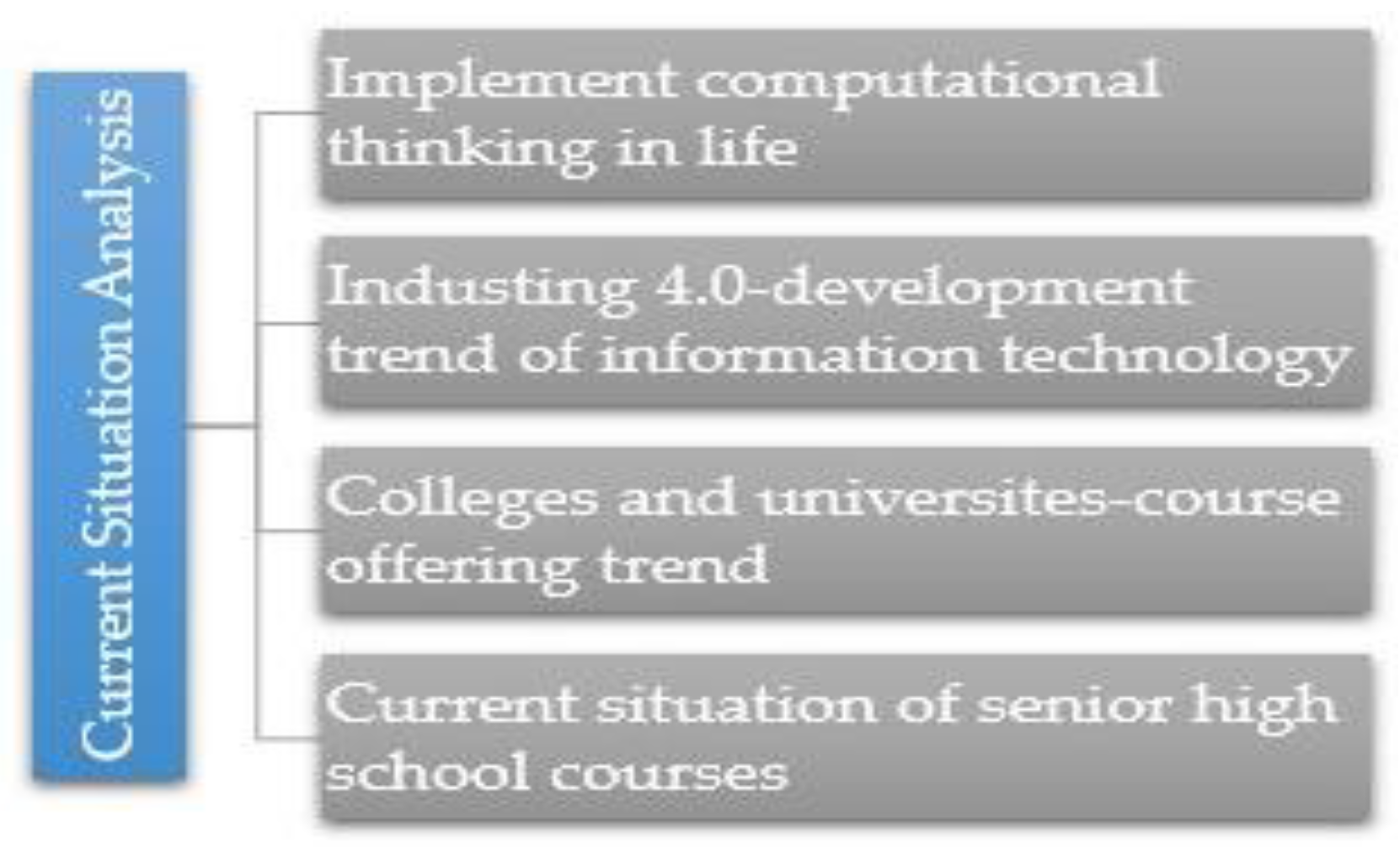
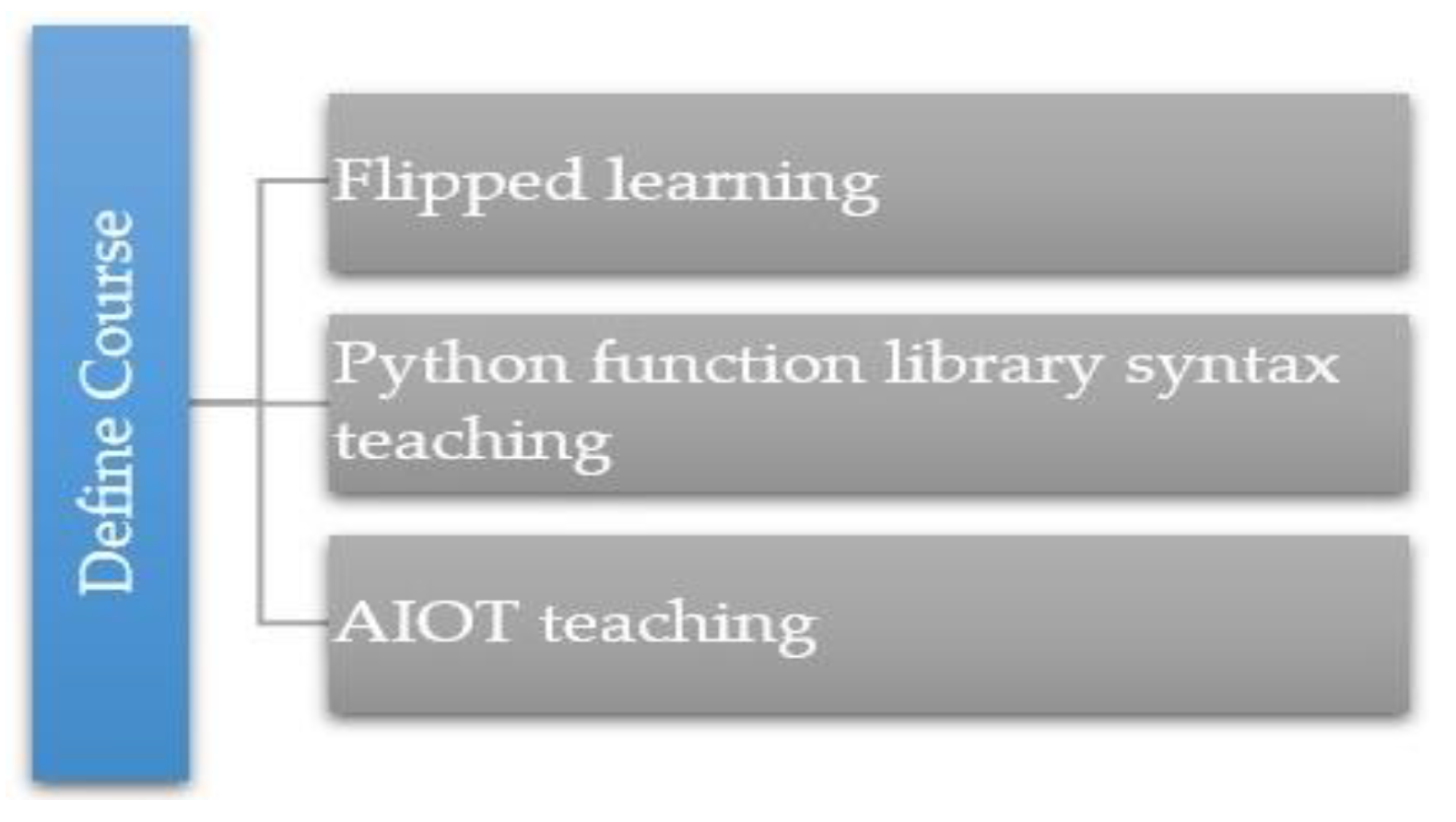
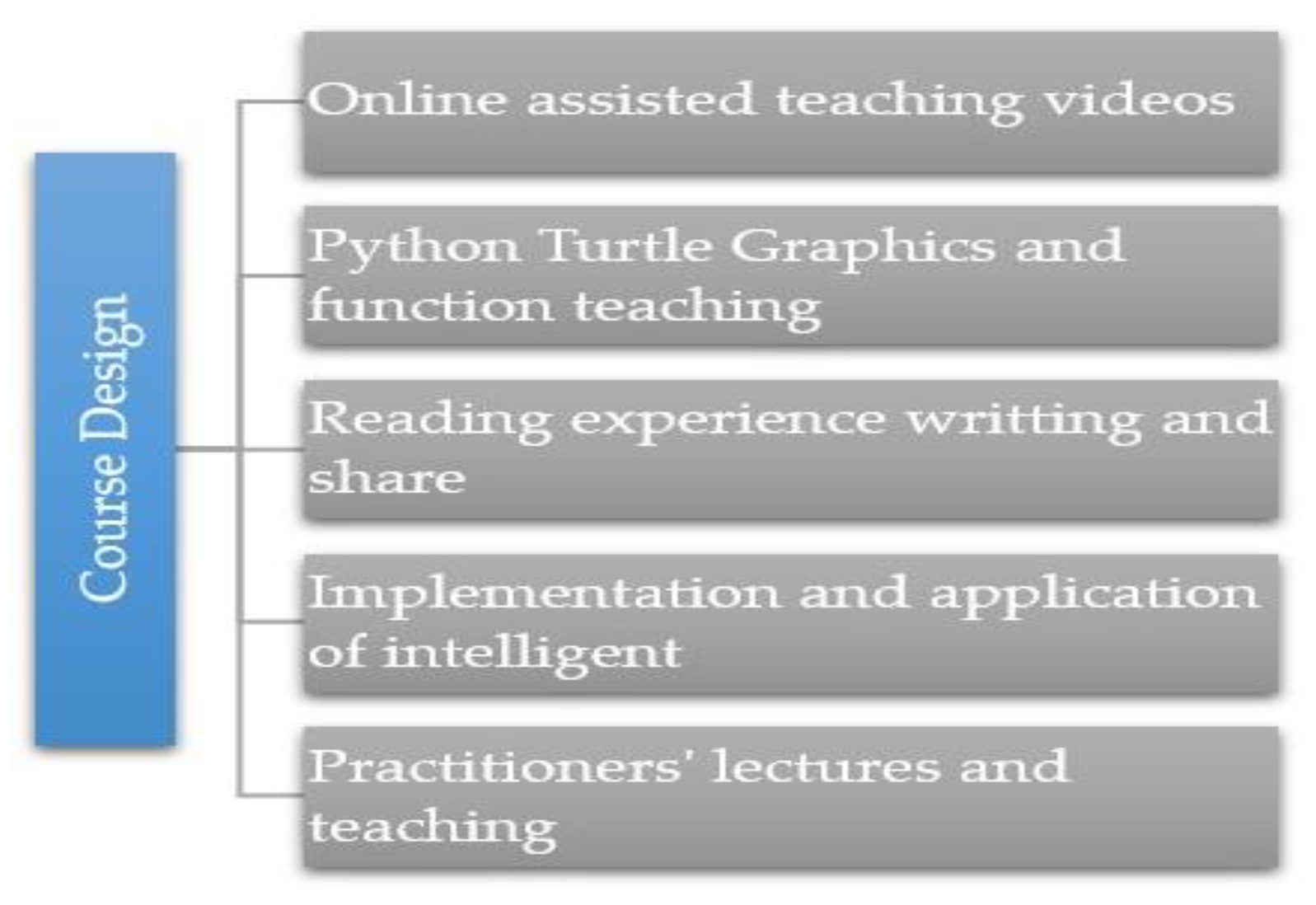
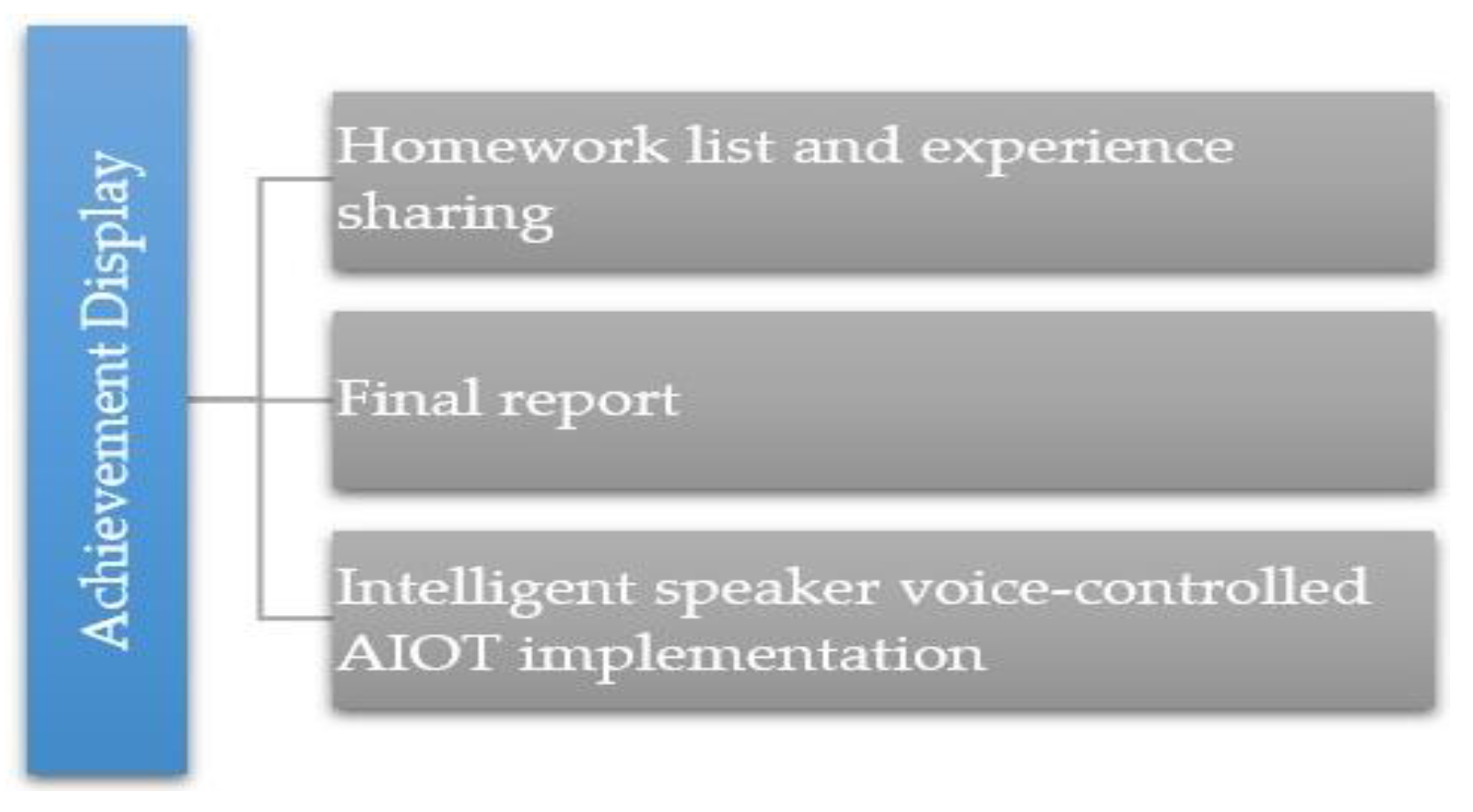


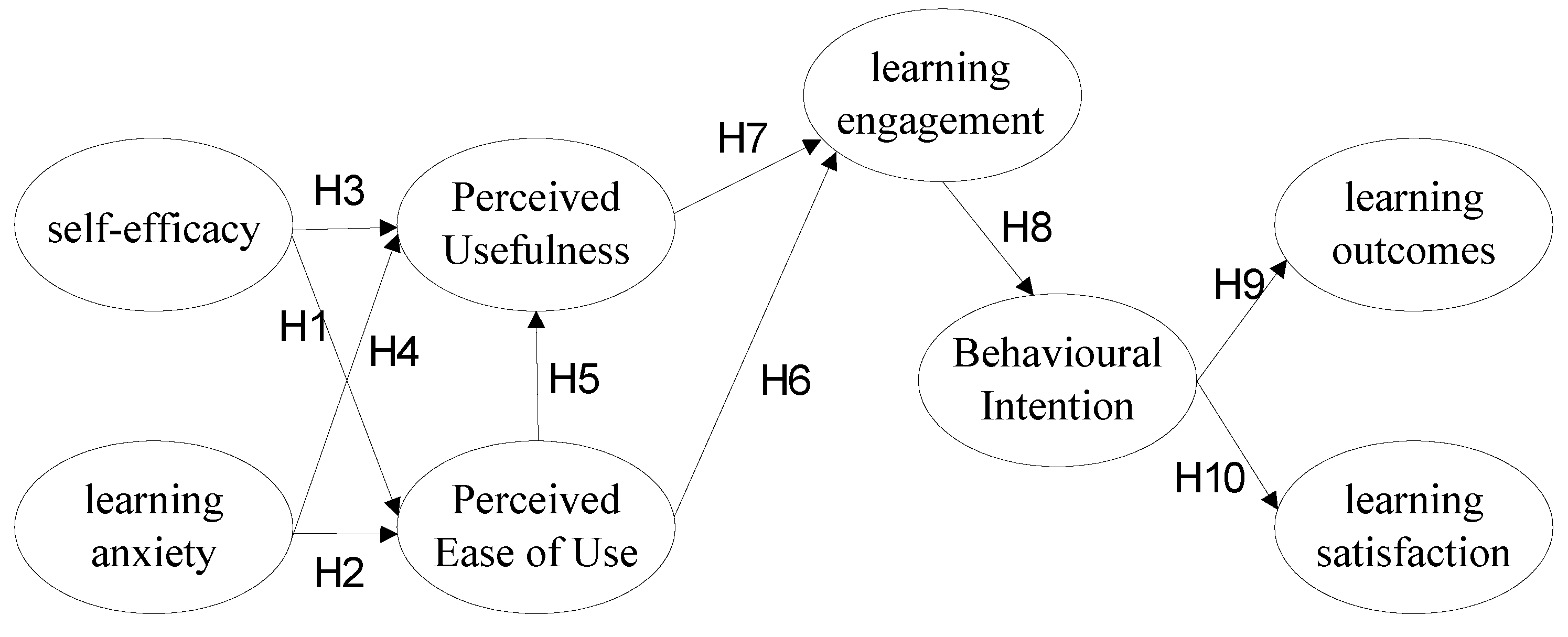
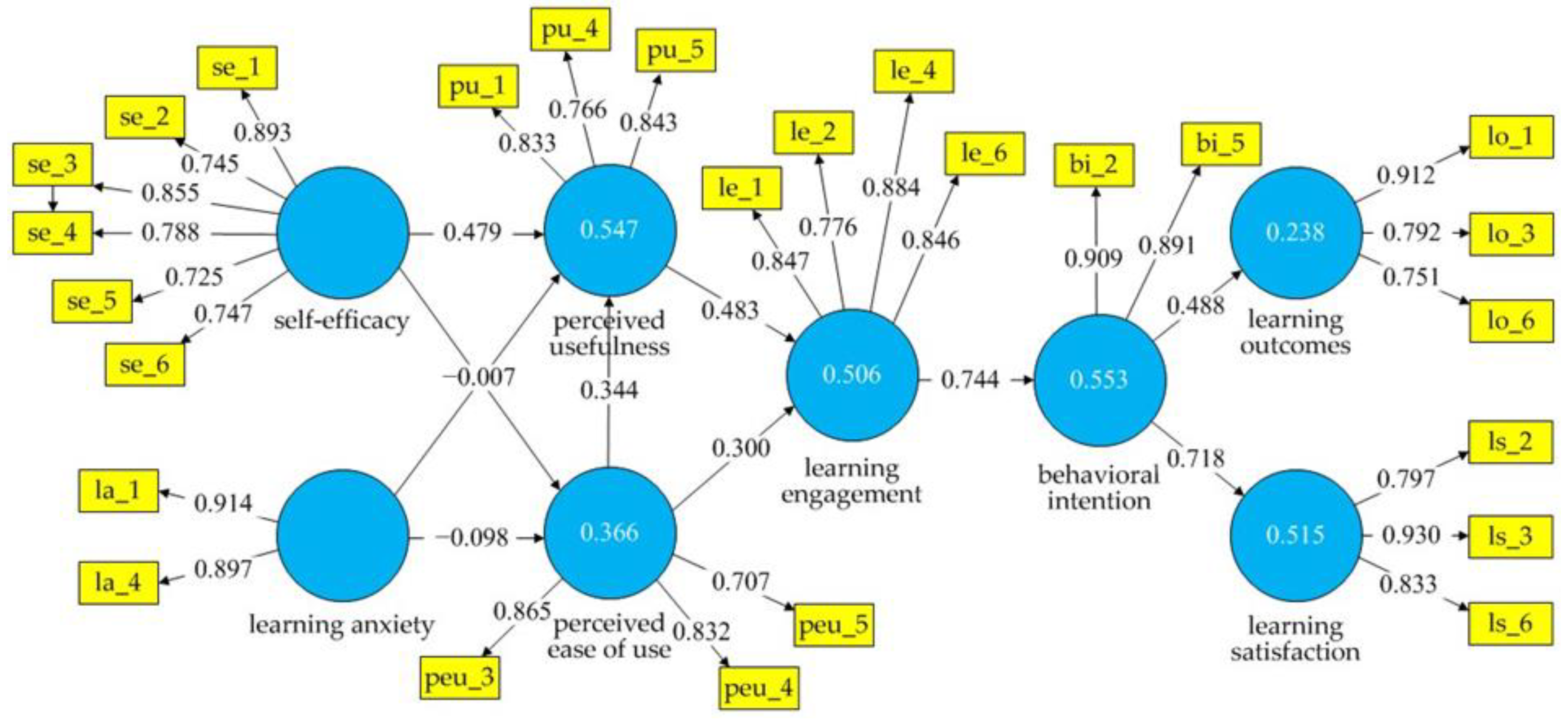
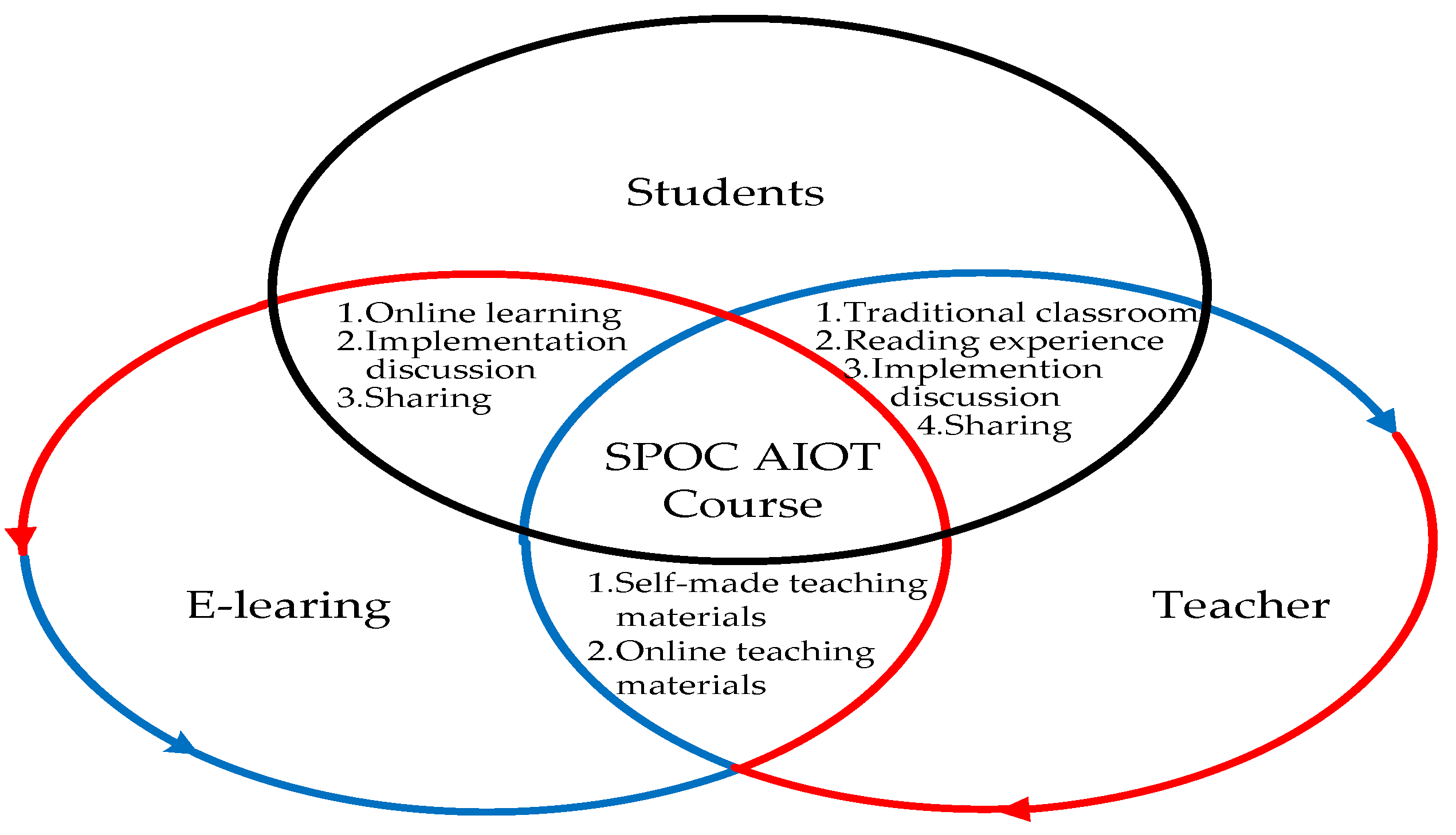
| Variable Name | Operation-Type Definition |
|---|---|
| Self-efficacy (se) | Learners’ perceptive confidence in learning AIOT in computer, network, and other related abilities and knowledge |
| Learning Anxiety (la) | Learners generally feel uneasy, anxious, or afraid of using a computer to learn AIOT at present or in the future |
| Perceived Ease of Use (peu) | The degree of ease of use for learners to learn and perceive science and technology in AIOT |
| Perceived Usefulness (pe) | The degree to which learners believe that using technology to learn AIOT will improve their performance or save effort |
| Learning Engagement (le) | The process by which learners make continuous efforts to achieve their goal of learning AIOT |
| Behavioral Intention (bi) | The intensity of learners’ willingness to use information systems to learn AIOT |
| Learning Outcomes (lo) | The knowledge and abilities acquired by learners after AIOT course or degree |
| Learning Satisfaction (ls) | Satisfaction and happiness obtained by learners in all aspects of teaching services when learning AIOT |
| Items | Number | Percentage |
|---|---|---|
| Have you ever taught yourself any courses or procedures related to AI deep learning before this course? | No: 32 | 89% |
| Yes: 4 | 11% | |
| Times of searching for AI deep learning-related courses on the internet every week | 0: 23 | 64% |
| 1–3 times: 13 | 36% | |
| Average time of daily online browsing of AI deep learning-related courses | Within 30 | 100% |
| minutes: 36 | 0% | |
| Number of group discussions per week | 0: 5 | 14% |
| 1~3 times: 28 | 78% | |
| 4~6 times: 3 | 8% |
| Dimension | Item | Factor Loading (Out Loading) | Cronbach’s α | CR Value | AVE Value |
|---|---|---|---|---|---|
| Learning Anxiety | la_1 | 0.914 | 0.782 | 0.901 | 0.820 |
| la_4 | 0.897 | ||||
| Behavioral intention | bi_2 | 0.909 | 0.766 | 0.895 | 0.810 |
| bi_5 | 0.891 | ||||
| Learning outcomes | lo_1 | 0.912 | 0.756 | 0.861 | 0.675 |
| lo_3 | 0.792 | ||||
| lo_6 | 0.751 | ||||
| Learning engagement | le_1 | 0.847 | 0.860 | 0.905 | 0.704 |
| le_2 | 0.776 | ||||
| le_4 | 0.884 | ||||
| le_6 | 0.846 | ||||
| Learning satisfaction | ls_2 | 0.797 | 0.815 | 0.891 | 0.732 |
| ls_3 | 0.930 | ||||
| ls_6 | 0.833 | ||||
| Perceived ease of use | peu_3 | 0.865 | 0.723 | 0.845 | 0.647 |
| peu_4 | 0.832 | ||||
| peu_5 | 0.707 | ||||
| Perceived usefulness | pu_1 | 0.833 | 0.750 | 0.855 | 0.664 |
| pu_4 | 0.766 | ||||
| pu_5 | 0.843 | ||||
| Self-efficacy | se_1 | 0.893 | 0.883 | 0.911 | 0.632 |
| se_2 | 0.745 | ||||
| se_3 | 0.855 | ||||
| se_4 | 0.788 | ||||
| se_5 | 0.725 | ||||
| se_6 | 0.747 |
| Dimension Item | 1 a | 2 b | 3 c | 4 d | 5 e | 6 f | 7 g | 8 h | |
|---|---|---|---|---|---|---|---|---|---|
| 1 | la_1 | 0.914 | |||||||
| la_4 | 0.897 | ||||||||
| 2 | bi_2 | 0.909 | |||||||
| bi_5 | 0.891 | ||||||||
| 3 | lo_1 | 0.912 | |||||||
| lo_3 | 0.792 | ||||||||
| lo_6 | 0.751 | ||||||||
| 4 | le _1 | 0.847 | |||||||
| le _2 | 0.776 | ||||||||
| le _4 | 0.884 | ||||||||
| le _6 | 0.846 | ||||||||
| 5 | ls_2 | 0.797 | |||||||
| ls_3 | 0.930 | ||||||||
| ls_6 | 0.833 | ||||||||
| 6 | peu_3 | 0.865 | |||||||
| peu_4 | 0.832 | ||||||||
| peu_5 | 0.707 | ||||||||
| 7 | pu_1 | 0.833 | |||||||
| pu_4 | 0.766 | ||||||||
| pu_5 | 0.843 | ||||||||
| 8 | se_1 | 0.893 | |||||||
| se_2 | 0.745 | ||||||||
| se_3 | 0.855 | ||||||||
| se_4 | 0.788 | ||||||||
| se_5 | 0.725 | ||||||||
| se_6 | 0.747 | ||||||||
| Dimension | Formell–Larcker | ||||||||
|---|---|---|---|---|---|---|---|---|---|
| 1 | 2 | 3 | 4 | 5 | 6 | 7 | 8 | ||
| 1 | Behavioral intention | 0.900 | |||||||
| 2 | Perceived usefulness | 0.738 | 0.815 | ||||||
| 3 | Perceived ease of use | 0.479 | 0.632 | 0.804 | |||||
| 4 | Learning anxiety | −0.268 | −0.147 | −0.189 | 0.906 | ||||
| 5 | Learning engagement | 0.744 | 0.672 | 0.605 | −0.356 | 0.839 | |||
| 6 | Learning outcomes | 0.488 | 0.493 | 0.310 | −0.360 | 0.321 | 0.821 | ||
| 7 | Learning satisfaction | 0.718 | 0.653 | 0.439 | −0.391 | 0.684 | 0.630 | 0.856 | |
| 8 | Self-efficacy | 0.589 | 0.686 | 0.597 | −0.157 | 0.593 | 0.423 | 0.626 | 0.795 |
| Dimension | Item | Variance Inflation Factor (VIF) | Inner VIF Values | ||||||||
|---|---|---|---|---|---|---|---|---|---|---|---|
| 1 | 2 | 3 | 4 | 5 | 6 | 7 | 8 | ||||
| 1 | Learning anxiety | la_1 | 1.699 | 1.000 | 1.025 | ||||||
| la_4 | 1.699 | ||||||||||
| 2 | Behavioral intention | bi_2 | 1.625 | 1.000 | |||||||
| bi_5 | 1.625 | ||||||||||
| 3 | Learning outcomes | lo_1 | 2.125 | 1.000 | |||||||
| lo_3 | 1.577 | ||||||||||
| lo_6 | 1.521 | ||||||||||
| 4 | Learning engagement | le_1 | 2.572 | ||||||||
| le_2 | 1.714 | ||||||||||
| le_4 | 2.288 | ||||||||||
| le_6 | 2.481 | ||||||||||
| 5 | Learning satisfaction | ls_2 | 1.786 | ||||||||
| ls_3 | 2.853 | ||||||||||
| ls_6 | 1.957 | ||||||||||
| 6 | Perceived ease of use | peu_3 | 2.532 | 1.664 | 1.577 | ||||||
| peu_4 | 2.372 | ||||||||||
| peu_5 | 1.152 | ||||||||||
| 7 | Perceived usefulness | pu_1 | 1.453 | 1.041 | 1.664 | ||||||
| pu_4 | 1.478 | ||||||||||
| pu_5 | 1.602 | ||||||||||
| 8 | Self-efficacy | se_1 | 3.805 | 1.025 | 1.559 | ||||||
| se_2 | 1.789 | ||||||||||
| se_3 | 2.920 | ||||||||||
| se_4 | 3.119 | ||||||||||
| se_5 | 2.408 | ||||||||||
| se_6 | 2.102 | ||||||||||
| Hypothesis | Relationship | Path Coefficient | t Value | Decision | R2 | f2 | 95%CI | Fitness | |
|---|---|---|---|---|---|---|---|---|---|
| LL | UL | ||||||||
| H1 | Self-efficacy → Perceived ease of use | 0.582 * | 4.844 | True | 0.366 | 0.521 | 0.387 | 0.779 | SRMRa = 0.122 NFI b= 0.409 RMS_theta c= 0.229 |
| H2 | Learning anxiety → Perceived ease of use | −0.098 | 0.588 | False | 0.015 | −0.375 | 0.170 | ||
| H3 | Self-efficacy → Perceived usefulness | 0.479 * | 2.794 | True | 0.547 | 0.326 | 0.195 | 0.760 | |
| H4 | Learning anxiety →Perceived usefulness | −0.007 | 0.044 | False | 0.000 | −0.303 | 0.234 | ||
| H5 | Perceived ease of use → Perceived usefulness | 0.344 * | 2.284 | True | 0.166 | 0.075 | 0.567 | ||
| H6 | Perceived ease of use → Learning engagement | 0.300 * | 2.002 | True | 0.506 | 0.109 | 0.084 | 0.570 | |
| H7 | Perceived usefulness → Learning engagement | 0.483 * | 3.218 | True | 0.284 | 0.214 | 0.704 | ||
| H8 | Learning engagement → Behavioral intention | 0.744 * | 11.125 | True | 0.553 | 1.239 | 0.626 | 0.845 | |
| H9 | Behavioral intention → Learning outcomes | 0.488 * | 5.053 | True | 0.283 | 0.313 | 0.345 | 0.657 | |
| H10 | Behavioral intention → Learning satisfaction | 0.718 * | 8.337 | True | 0.518 | 1.063 | 0.553 | 0.837 | |
Publisher’s Note: MDPI stays neutral with regard to jurisdictional claims in published maps and institutional affiliations. |
© 2021 by the authors. Licensee MDPI, Basel, Switzerland. This article is an open access article distributed under the terms and conditions of the Creative Commons Attribution (CC BY) license (http://creativecommons.org/licenses/by/4.0/).
Share and Cite
Tsai, C.-C.; Cheng, Y.-M.; Tsai, Y.-S.; Lou, S.-J. Impacts of AIOT Implementation Course on the Learning Outcomes of Senior High School Students. Educ. Sci. 2021, 11, 82. https://doi.org/10.3390/educsci11020082
Tsai C-C, Cheng Y-M, Tsai Y-S, Lou S-J. Impacts of AIOT Implementation Course on the Learning Outcomes of Senior High School Students. Education Sciences. 2021; 11(2):82. https://doi.org/10.3390/educsci11020082
Chicago/Turabian StyleTsai, Chih-Cheng, Yuh-Min Cheng, Yu-Shan Tsai, and Shi-Jer Lou. 2021. "Impacts of AIOT Implementation Course on the Learning Outcomes of Senior High School Students" Education Sciences 11, no. 2: 82. https://doi.org/10.3390/educsci11020082
APA StyleTsai, C.-C., Cheng, Y.-M., Tsai, Y.-S., & Lou, S.-J. (2021). Impacts of AIOT Implementation Course on the Learning Outcomes of Senior High School Students. Education Sciences, 11(2), 82. https://doi.org/10.3390/educsci11020082





